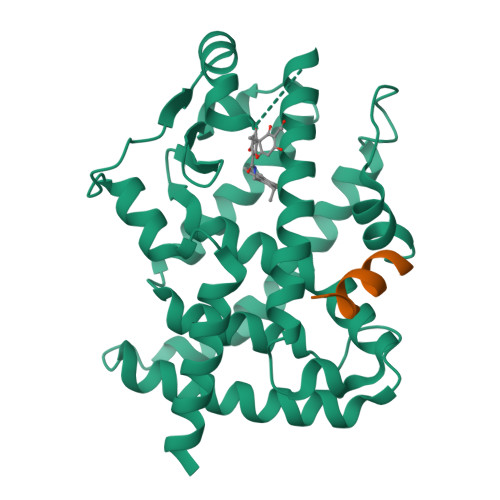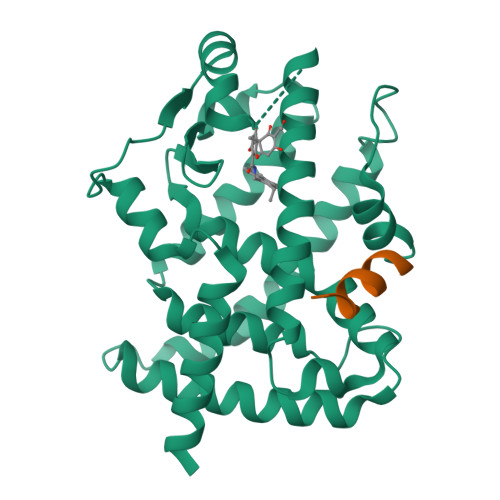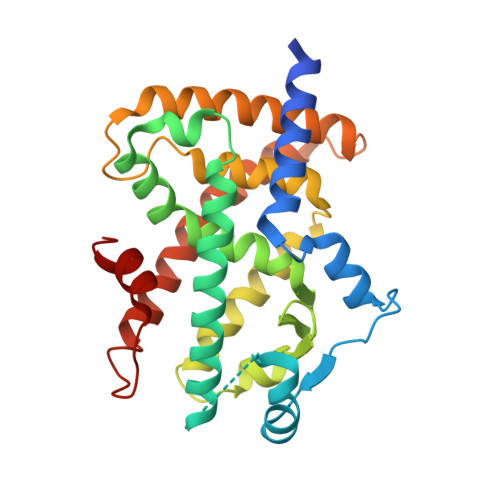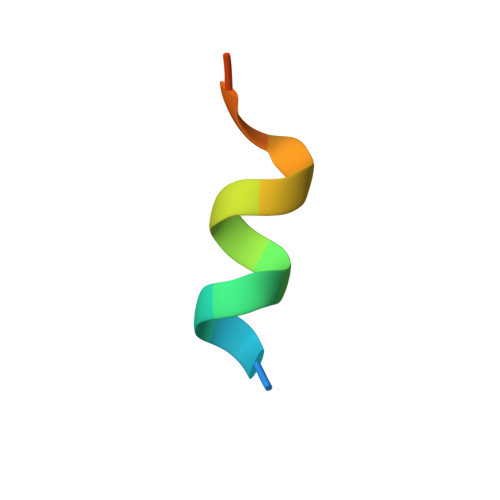Synthesis and biological evaluation of novel (-)-cercosporamide derivatives as potent selective PPARg modulators
Furukawa, A., Arita, T., Fukuzaki, T., Mori, M., Honda, T., Satoh, S., Matsui, Y., Wakabayashi, K., Hayashi, S., Nakamura, K., Araki, K., Kuroha, M., Tanaka, J., Wakimoto, S., Suzuki, O., Ohsumi, J.(2012) Eur J Med Chem 54: 522-533
- PubMed: 22727448
- DOI: https://doi.org/10.1016/j.ejmech.2012.05.040
- Primary Citation of Related Structures:
4F9M - PubMed Abstract:
Selective peroxisome proliferator-activated receptor gamma (PPARγ) modulators are expected to be a novel class of drugs improving plasma glucose levels without PPARγ-related adverse effects. As a continuation of our studies for (-)-Cercosporamide derivatives as selective PPARγ modulators, we synthesized substituted naphthalene type compounds and identified the most potent compound 15 (EC(50) = 0.94 nM, E(max) = 38%). Compound 15 selectively activated PPARγ transcription and did not activate PPARα and PPARδ. The potassium salt of compound 15 showed a high solubility and a good oral bioavailability (58%). Oral administration of the potassium salt remarkably improved the plasma glucose levels of female Zucker diabetic fatty rats at 1 mg/kg. Moreover, it did not cause a plasma volume increase or a cardiac enlargement in Wistar-Imamichi rats, even at 100 mg/kg.
Organizational Affiliation:
Shinagawa R&D Center, Daiichi Sankyo Co., Ltd., 1-2-58, Hiromachi, Tokyo 140 8710, Japan. furukawa.akihiro.zy@daiichisankyo.co.jp




















